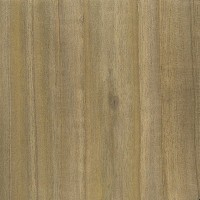 |
Common Name(s): Sumac, Staghorn Sumac Scientific Name: Rhus spp. (Rhus typhina) Distribution: Northeastern United States Tree Size: 30-40 ft (10-12 m) tall, 6-12 in (15-30 cm) trunk diameter Average Dried Weight: 33 lbs/ft3 (530 kg/m3) Specific Gravity (Basic, 12% MC): .45, .53 Janka Hardness: 680 lbf (3,030 N) Modulus of Rupture: 10,200 lbf/in2 (70.4 MPa) Elastic Modulus: 1,190,000 lbf/in2 (8.21 GPa) Crushing Strength: 5,940 lbf/in2 (41.0 MPa) Shrinkage: No data available |
Color/Appearance: Along with Lignum Vitae, Sumac is one of the few woods that has a consistently yellow to olive-green coloration. Sapwood is a grayish white.
Grain/Texture: Grain tends to be straight to interlocked, with a fine to medium texture. Sumac has a moderate level of natural luster.
Endgrain: Ring-porous or semi-ring-porous; medium to large earlywood pores 3-6 rows wide, small to medium latewood pores, moderately numerous to numerous; commonly in radial multiples or tangential bands, sometimes in clusters; tyloses present; narrow rays not visible without lens, normal spacing; parenchyma vasicentric.
Rot Resistance: Sumac is rated as being non-durable to perishable regarding decay resistance, and is also susceptible to insect attack.
Workability: Sumac is generally easy to work, yet its low density can produce fuzzy surfaces that need to be cleaned up with sanding.
Odor: No characteristic odor.
Allergies/Toxicity: Sumac has been reported to cause skin irritation. Most species that produce strong skin reactions (mostly through contact with leaves), such as Posion Sumac, are in the Toxicodendron genus, rather than the Rhus genus. See the articles Wood Allergies and Toxicity and Wood Dust Safety for more information.
Pricing/Availability: Because of its small size, Sumac is not a commercially important species. Small pieces of Sumac are occasionally harvested by hobbyists for specialty wood projects; prices should be moderate.
Sustainability: This wood species is not listed in the CITES Appendices or on the IUCN Red List of Threatened Species.
Common Uses: Small specialty items, carving, turned objects, and inlay.
Comments: None.
None available.
Scans/Pictures: A special thanks to Mike Leigher for providing the wood sample of this wood species.
 |
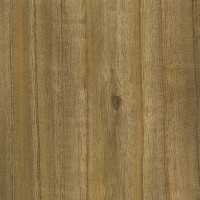 |
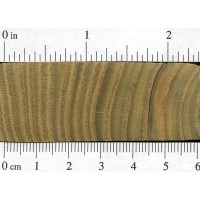 |
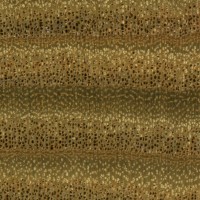 |
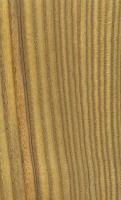 |





Have turned sumac bowls for the first time and the wood is absolutely amazing, both texture and yellow-green, neon-like colour (not shown very good in the photos – bad light). I was so amazed I didn´t stop until all 18 pieces were rough-turned, ending nearly at 11:00 PM. The wood is overall easy to work, it is quite soft, yet resistant to tearout, even with non very sharp tool. Some pieces were caught by the rot a little bit (darker spots).
The range of this tree is noted as northeaster US. We have quite a stand of these trees in the 6-10 inch diameter range on our property in southern middle Tennessee just north of the Alabama line. Our experience with the tree is on our often-steep forested hillsides these trees account for approximately 75% of the trees that fail and fall. We have had to take down three of these trees that threatened our cabin. On the plus side, if one is able to get the wood at the right time after it has been on the ground, it can… Read more »
Just a note that my Dad called this wood “Shoemaker” and that is what is was known as when I was a kid. Dad didn’t say but I assume at some point someone in our family used this to craft shoes with or simply the two names sounded similar. After heading off to school It didn’t take me long in a dendrology class exam to realize Sumac is the preferred common name
That’s what I always heard,
I have several pieces of quartersawn sumac, it’s almost orange and brown striped. Absolutely beautiful wood. Easy to work with making small objects; boxes, inlays, and turnings. I’ve made knife scales and turned salt cellars with it. Finishes to a shine with no stain needed. If you want this as lumber better buy yourself a sawmill. I’ve not seen it on the market.
A point to bear in mind with sumac is that the wood deas impart a distinct flavour. It isn’t harmful and not entirely unpleasant but it’s worth taking this into consideration if using it for cullinary purposes
I was thinking of making a small saltbox for the kitchen from staghorn sumac. Is it safe to use for this? I also wonder how the salt would affect it in the long run. If it’s safe to use for this, I suppose I put a food safe wax as a finish.
salad bowl diam. 21 cm


I have like 4 cords of it and have being wondering what it was for some time
With its soft pith, Sumac has often been used to make flutes or recorders and the like since it is so easy to hollow out the soft heart in a length of wood. Maybe if it grew in Australia it would be known as good didgeridoo wood!
I always find Staghorn Sumac as having very low rot resistance. This is not the case as I have found pieces laying on the ground exposed to the elements for 10 years, and only the sapwood has rotted. The heart, when split, shows no spalting, even after that time. It does become brittle with time, but that is the case to a lesser degree with redwood and cedar as well.
Is sumac a hardwood or soft wood? I had a large sumac tree come down and I want to know if I can burn the wood in my wood stove.
I believe that 4 of the trees on my property when I bought it were sumac. recently we had a storage shed that mysteriously burned down along with 2 of these trees. The bark was chared but the interior of the tree remained intact. Under this char was a beautiful red wood. The fire that burned on these trees was intense. I have also had to have the huge one cut down do to having been planted next to my house and was almost touching my house. The wood seems hard but I am not the one who cut it.… Read more »
Probably not sumac. Sumac is yellow to greenish, very soft. Sounds more like osage orange. Where do you live?
I have several stands of these trees on my property. It has a distinctive golden / greenish / Brown grain. I have found the pith of even the thickest part of the tree is still soft as foam. When cutting / working on the wood it has an odor quite similar to Olive wood.
I picked up some pen blanks from eBay. It’s a very light wood, greenish-yellow with darker streaks of brown. It turned very easily with no tearout issues and finished very well.
Not sure what else you’d like to know about it, feel free to contact me with questions.